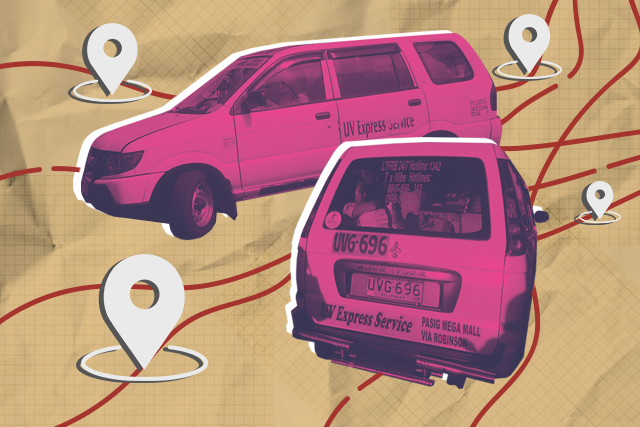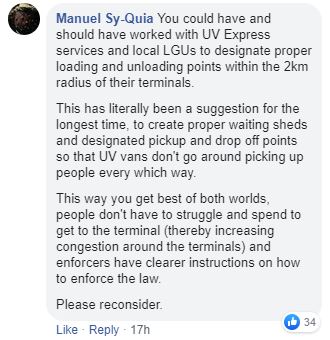
The recent memorandum that enforces a point-to-point policy for UV express units earned the ire of commuters and operators who argue that it brings a new inconvenience in the already confusing public transportation network.
UV Express Service vehicles will soon be required to ply a terminal-to-terminal or point-to-point basis only, according to Memorandum Circular 2019-025 of the Land Transportation Franchising and Regulatory Board.
This means the vehicles will no longer drop off and pick up passengers at any place between the designated points or stops.
The implementation of this policy starts next week.
“The LTFRB has observed that numerous UV Express Services are in breach of the terms and conditions of their franchise, leading to the rampant practice of loading and unloading of passengers in between their origin and destination, prolonging the turn around travel time between destinations and making it very difficult on the part of the enforcers to implement the service,” the LTFRB said on Facebook.
The UV Express vans have mostly traveled longer distances and their endpoints or terminals are far from each other. Passengers just get picked up and dropped off along specific routes the way buses and jeepneys do.
What the public has to say
Filipinos aired their frustration on this online, saying that LTFRB members did not take into consideration the great inconvenience the altered transport service will cause.
Longer travel time
Commuters will have a longer travel time to get to their destinations given the long distances between UV terminals.
One Twitter user even shared how much time it’ll take to commute to school with the ordinance in place.
If you are a student with the same travel route as mine (SJDM Bulacan to UST) Then this is how the new P2P implementation will affect your travel time.
w/ UV Express
Standard travel time is 2hrs (30mins from SJDM – SM Fairview, 1hr 30mins to UST)
Add 30 mins to 1hr kung traffic— Sofia (@labyeha) May 28, 2019
Expensive fare
Passengers will have to pay for another trip to get to their destinations from the terminals.
This concern was raised online as well and Filipinos noted how the fare will add to other already burdensome expenses.
Hindi nila naiisip yung pabarya-baryang pamasaheng nasasayang natin. Imbis na pangkain or pambili ng ibang bagay.l, nasasayang sa pamasahe lang. Hindi kasi nila alam yung hirap. Hindi nila alam yung pinagdadaanan ng masa. https://t.co/rn5TrhkP7h
— ja mes (@rafified) May 28, 2019
Confusing loading and unloading bays
The loading and unloading areas of PUVs, in general, can also be confusing.
Some Filipinos complained that local authorities should first establish these terminals or stops before implementing the measure by Monday, June 3.

Possible compromises
The concerns mentioned earlier were also brought up by the Lawyers for Commuters and Safety Protection in its suggestion to the LTFRB.
“Our suggestion is that the UV Express must not be patterned after point-to-point buses. A compromise solution for this is the LTFRB should designate loading and unloading points in between the origin and destination of the UV Express units particularly in areas that have high passenger demand,” said lawyer Ariel Inton of the LCSP.
Inton, a former LTFRB Board Member, pointed out that this ordinance is not new.
In 2005, when the UV Express started, drivers also plied a point-to-point route.
Four years later, the LTFRB allowed UV Express Units to pick up and drop off within a two-kilometer radius from the endpoints specified in their franchises via Memorandum Circular No. 2009-019.
Inton understands the agency’s purpose for strictly implementing the original scheme.
However, commuters argued their cases and circumstances were not considered before the circular was released.
“We must take note of the fact that UV Express is being utilized by our commuters because it is an affordable transport service. Thus, the LTFRB should have come up with a decision that would not have inconvenienced the travel of these commuters,” he said. — Artwork by Uela Altar-Badayos









